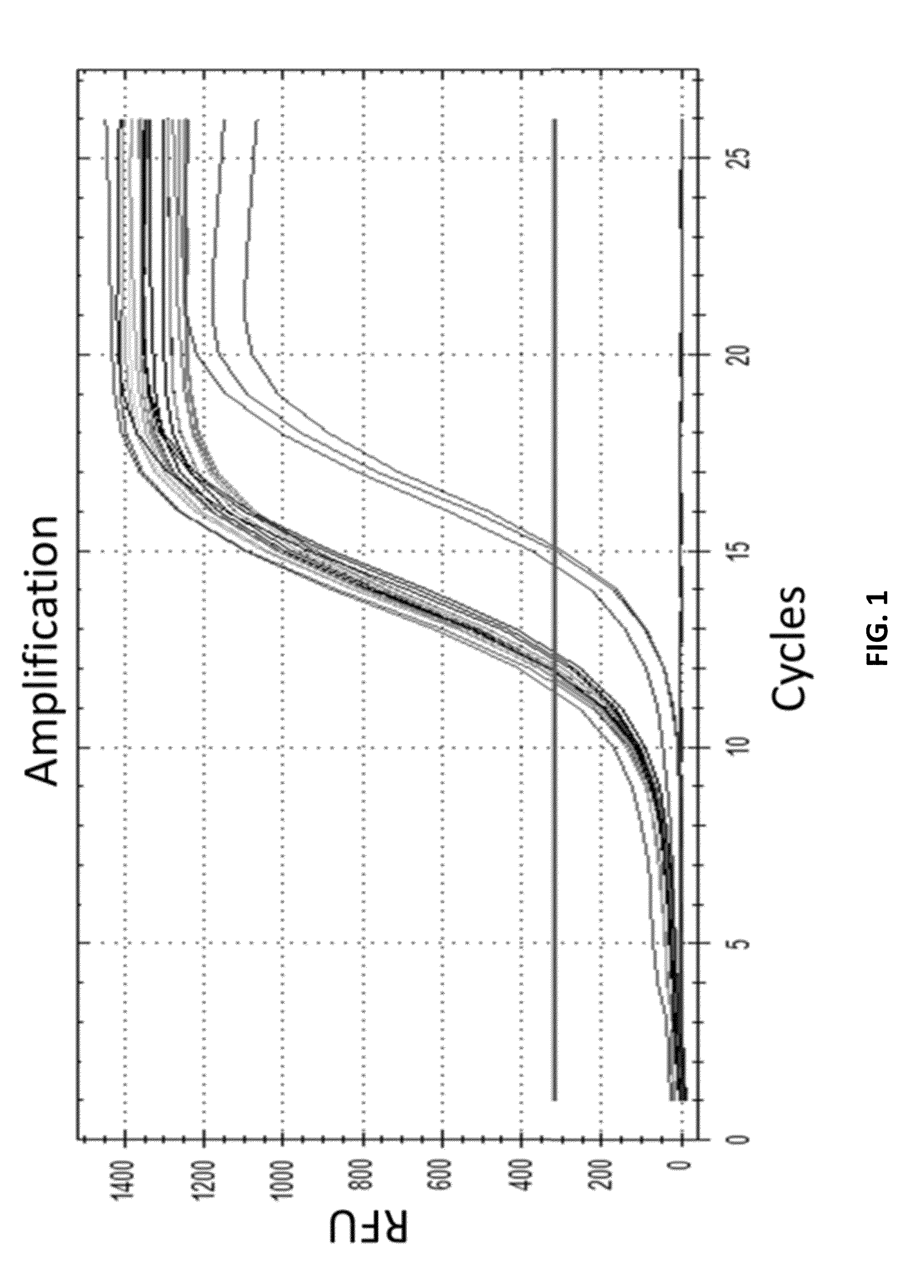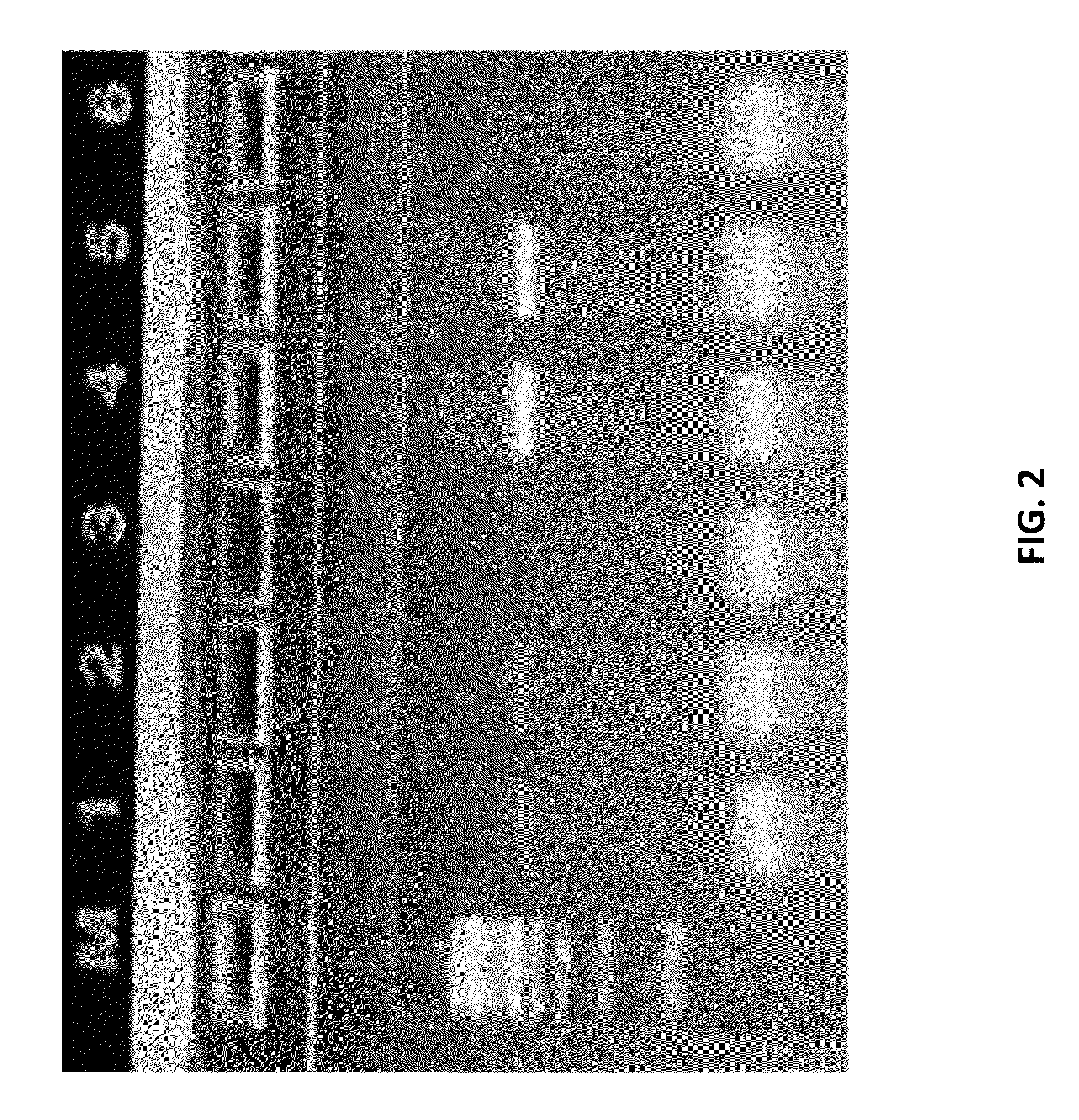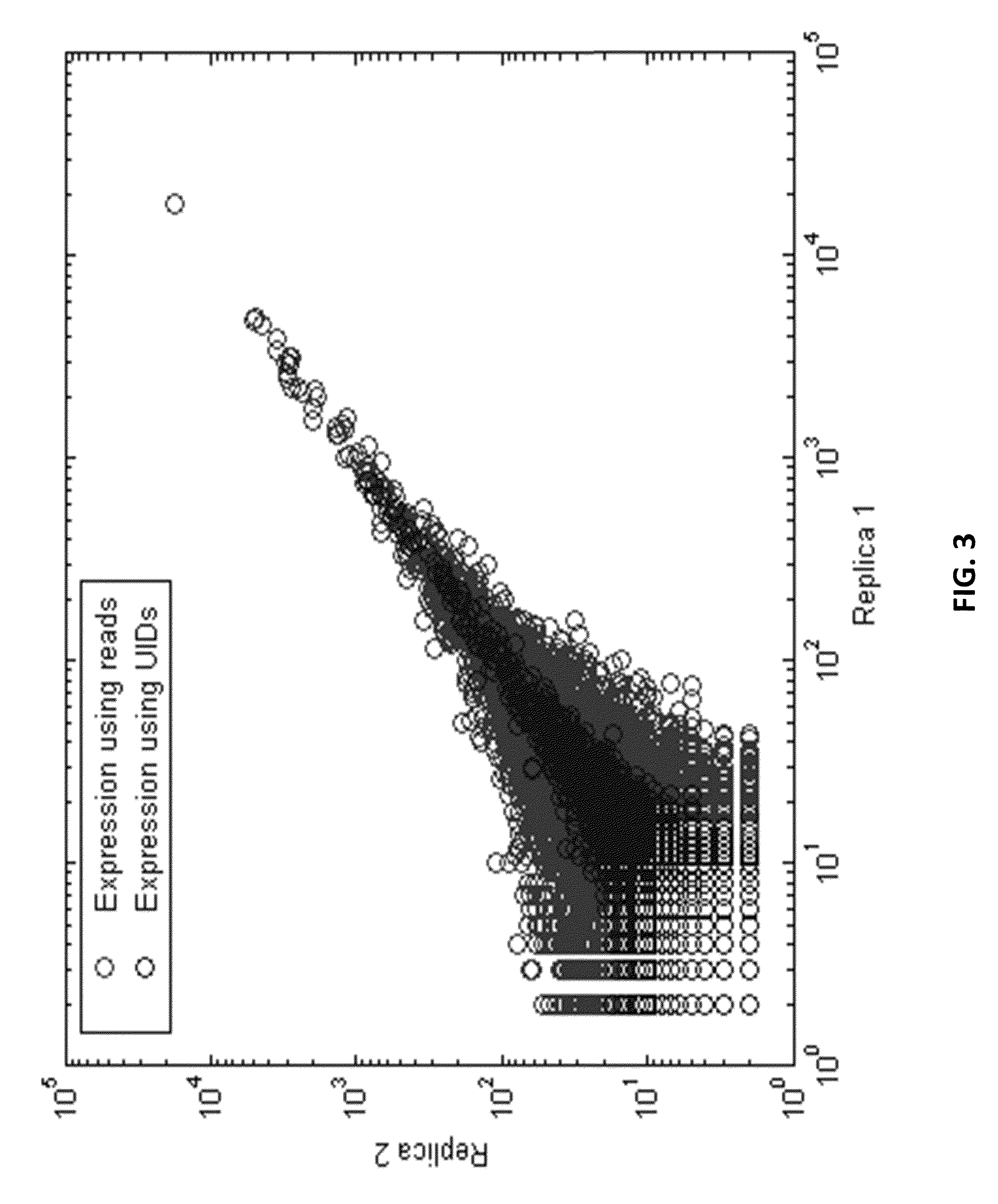Single cell bar-coding for antibody discovery
a single cell, antibody technology, applied in the field of single cell bar-coding for antibody discovery, can solve the problems of limited antibody display technology, high risk of immunogenicity in patients, and large expression difficulties in large-scale expression
- Summary
- Abstract
- Description
- Claims
- Application Information
AI Technical Summary
Benefits of technology
Problems solved by technology
Method used
Image
Examples
example 1
Immune Sequencing V2
[0509]A unique identifier (UID) barcode was used to tag every single RNA molecule. The UID was then amplified in many copies so that post-sequencing the multiple sequencing read collapsed into a single sequence with higher base accuracy, and revealed true antibody sequences and mutations as opposed to PCR or sequencing errors. The UID was also used to track contamination across multiple samples.
1—RNA
[0510]Starting material was RNA from immune cells composed of the V, D, J gene segments that encode for an antibody, and contains the constant region.
Variations:
[0511]Starting material can be DNA,
RNA can be from T cells
RNA can be heavy chain (V, D, J segments), or light chain (V, J segments only).
2—Reverse Transcription
[0512]The RNA was reverse transcribed into cDNA using one or a pool of oligo composed of the following parts: a portion complementary to a region of the RNA (usually in the constant region or to the poly-A tail of the mRNA). The UID, which was a stretch...
example 2
Immune Sequencing V3
[0519]This describes the use of template switching during reverse transcription to eliminate the use of pool of multiplex V primers, therefore removing issues of PCR bias. This process was used for antibody next-gen sequencing, as well as the incorporation of Unique identifier oligo (UID).
1—RNA
[0520]Starting material was RNA from immune cells composed of the V, D, J gene segments that encodes for an antibody, and contains the constant region.
Variations:
[0521]Starting material was DNA,
RNA was from T cell
RNA was heavy chain (V, D, J segments), or light chain (V, J segments only)
2—Reverse Transcription (RT)
[0522]The RNA was reverse transcribed into cDNA using one or a pool of oligo composed of the following parts: a portion complementary to a region of the RNA (usually in the constant region or to the poly-A tail of the mRNA). Multiple oligo were used to anneal to the various constant region possible. The reverse transcriptase used here had a non template terminal t...
example 3
Single Cell Barcoding Overview
Overview
[0531]As a proof of concept of single barcoding with a UID, water in oil emulsions were created in such way that resulting emulsions contained 1 cell or less, and also contains 1 UID oligo or more per emulsion. The cells / emulsion were subject to the RNA or DNA single barcoding protocol as described herein, and the UID of each emulsion was fused with the cell target of interest. Matching UIDs were fused only to cell components present in the same emulsion as the UID oligo. Following sequencing, UID deconvolution was used to identify which RNA (or DNA) originated from which cell.
Variations;
[0532]There was 1 cell or more per emulsion.
There was 1 UID or more per emulsion the UID was introduced via a solid support or in solution.
There was more than one UID per emulsion.
There was more than one UID per solid support per emulsion.
PUM
| Property | Measurement | Unit |
|---|---|---|
| time | aaaaa | aaaaa |
| time | aaaaa | aaaaa |
| time | aaaaa | aaaaa |
Abstract
Description
Claims
Application Information
 Login to View More
Login to View More - R&D
- Intellectual Property
- Life Sciences
- Materials
- Tech Scout
- Unparalleled Data Quality
- Higher Quality Content
- 60% Fewer Hallucinations
Browse by: Latest US Patents, China's latest patents, Technical Efficacy Thesaurus, Application Domain, Technology Topic, Popular Technical Reports.
© 2025 PatSnap. All rights reserved.Legal|Privacy policy|Modern Slavery Act Transparency Statement|Sitemap|About US| Contact US: help@patsnap.com



